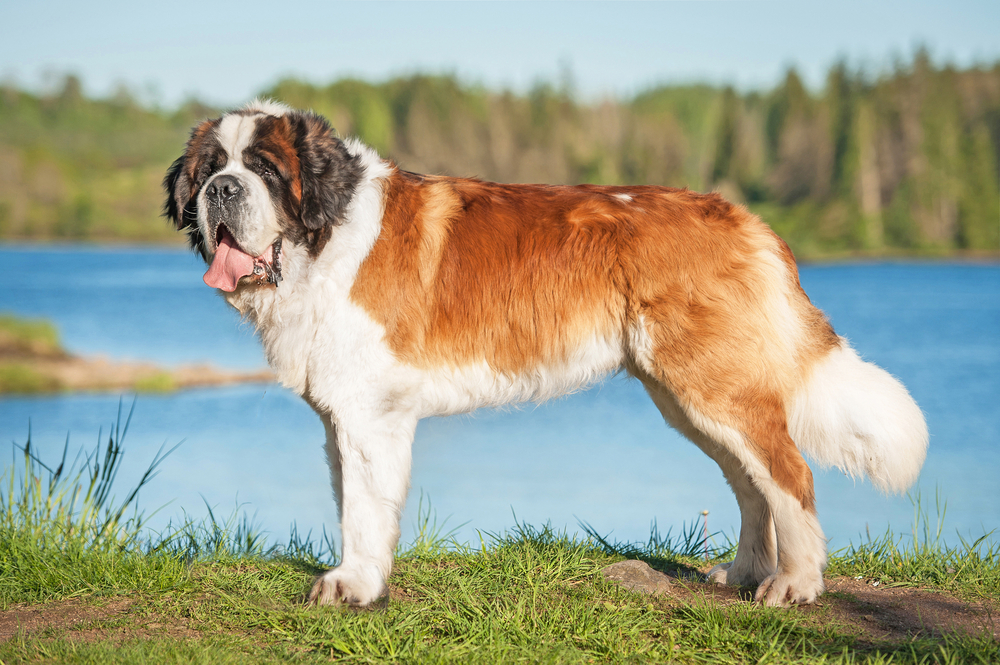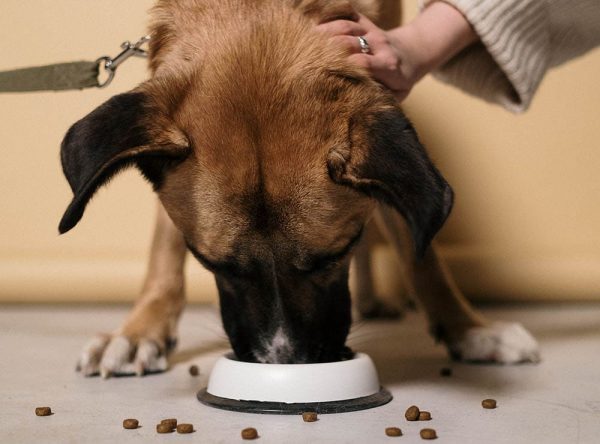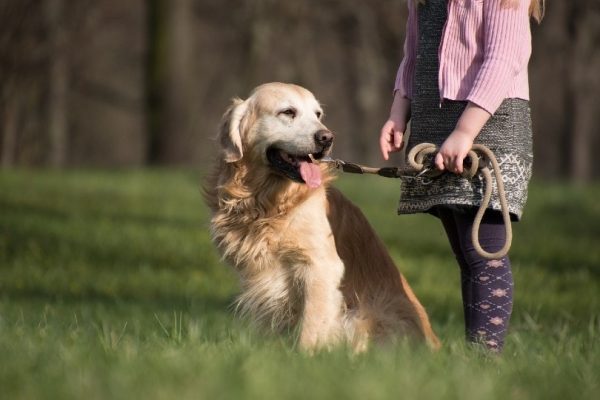In this article
View 8 More +The first time you meet a Saint Bernard (or St Bernard) you won’t forget it, their size alone is enough to overwhelm you. After all, they may weigh as much or more than you do! Experts estimate the breed’s history goes back to the mid-1600s, although accounts of the Augustine monks and their special dogs go back to the 11th century. As a fun fact, this breed gets its name from the Great Saint Bernard Pass between Switzerland and Italy. Let’s learn everything else there is to know about caring for this special breed.
Breed Overview
Height:
26–30 inches
Weight:
120–180 pounds
Lifespan:
8–10 years
Colors:
Brown, mahogany, orange, red, brindle, rust, white, black
Suitable for:
Active families or singles looking for a large and affectionate dog
Temperament:
Loyal, gentle, protective, intelligent, curious
This giant dog is part of the American Kennel Club’s (AKC) Working Group. The organization recognized the breed and 14 others in the 1885 class of recruits. Their job was integral to rescue efforts for unfortunate travelers who became stranded while trying to traverse the snowy mountain passes. They were also monks’ companions and watchdogs at monasteries.
Despite their size, the Saint Bernard dog is a popular breed, coming in at 56 on the AKC’s list of most popular breeds.1 Caring for this dog is challenging on many scores. However, they will reward you as a loyal and devoted family pet for the experienced caregiver.
Saint Bernard Characteristics
Saint Bernard Puppies
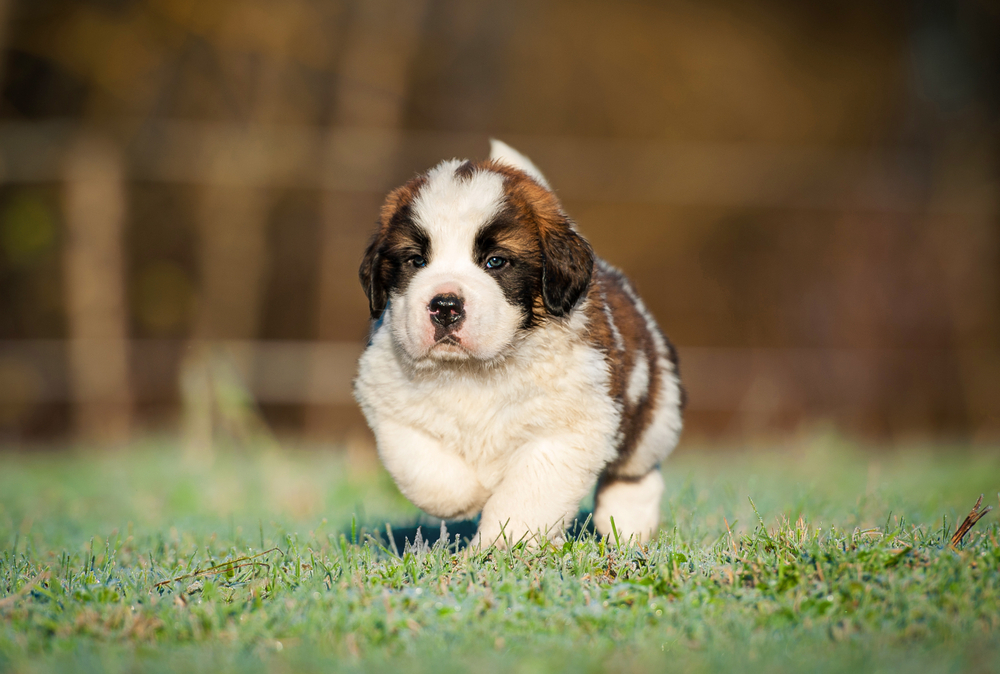
You won’t have a hard time finding a Saint Bernard puppy. They are relatively plentiful, given their popularity. However, you may need to forgo breeding rights or agree to spay or neuter them before a breeder will let you take one home.
We recommend only buying from reputable sellers who conduct the Orthopedic Foundation for Animals (OFA) recommended pre-breeding screenings, exams, and DNA tests.2 The breed is susceptible to several serious hereditary and congenital conditions that warrant this caution.

Temperament & Intelligence of the Saint Bernard 🧠
The Saint Bernard is a sweetheart. They are loyal and affectionate pets with their families. Nevertheless, they are less open to strangers, which is understandable, given their role as watchdogs. They are adaptable animals and unsurprisingly tolerant of cold weather. The Saint Bernard is an intelligent animal because of the nature of their work. However, they also have an independent streak.
We don’t recommend them for novice pet owners if just because of the dog’s size. That makes early training and socialization imperative. Ironically, these dogs are sensitive and don’t enjoy being alone. That makes them better choices for active households where someone is always around to keep this gentle giant company.
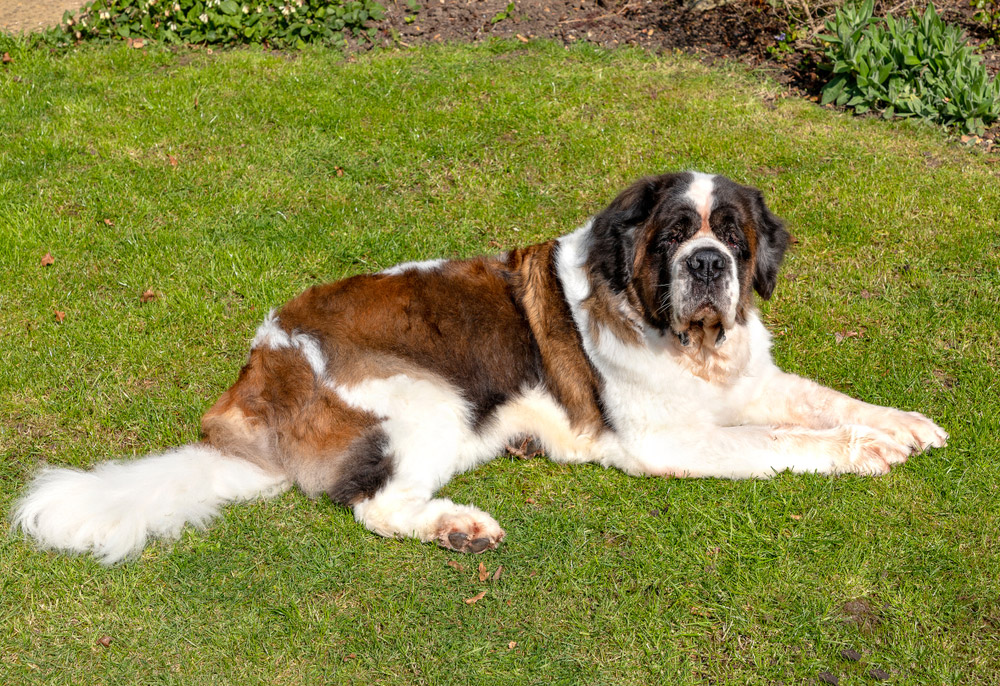
Are These Dogs Good for Families? 🏠
The Saint Bernard dog makes a delightful family pet. They are kid-friendly, although we suggest supervising playtime with young children. They have a moderate tendency to be nippy, which you should monitor. Of course, their size is another factor. This dog may not realize their strength when playing with the little ones, so families with older children might be a better fit.
Does This Breed Get Along With Other Pets?
The Saint Bernard doesn’t have a keen prey drive. However, the breed was historically a watchdog and may not welcome other dogs or pets. A puppy may get along with other animals if raised together, but the same as with kids, we recommend supervising any interactions. On the positive side, the breed doesn’t bark or howl a lot, so playtime might not get too loud.

Things to Know When Owning a Saint Bernard:
The best way to describe what you need to know about owning a Saint Bernard is more: more food, more training, and more attention to potential health issues. You must also have the space in your home and yard to accommodate this massive animal. We must also address the elephant in the room: The Saint Bernard drools—a lot. You should always carry a towel when you travel with your pet. Let’s learn more about their health requirements.
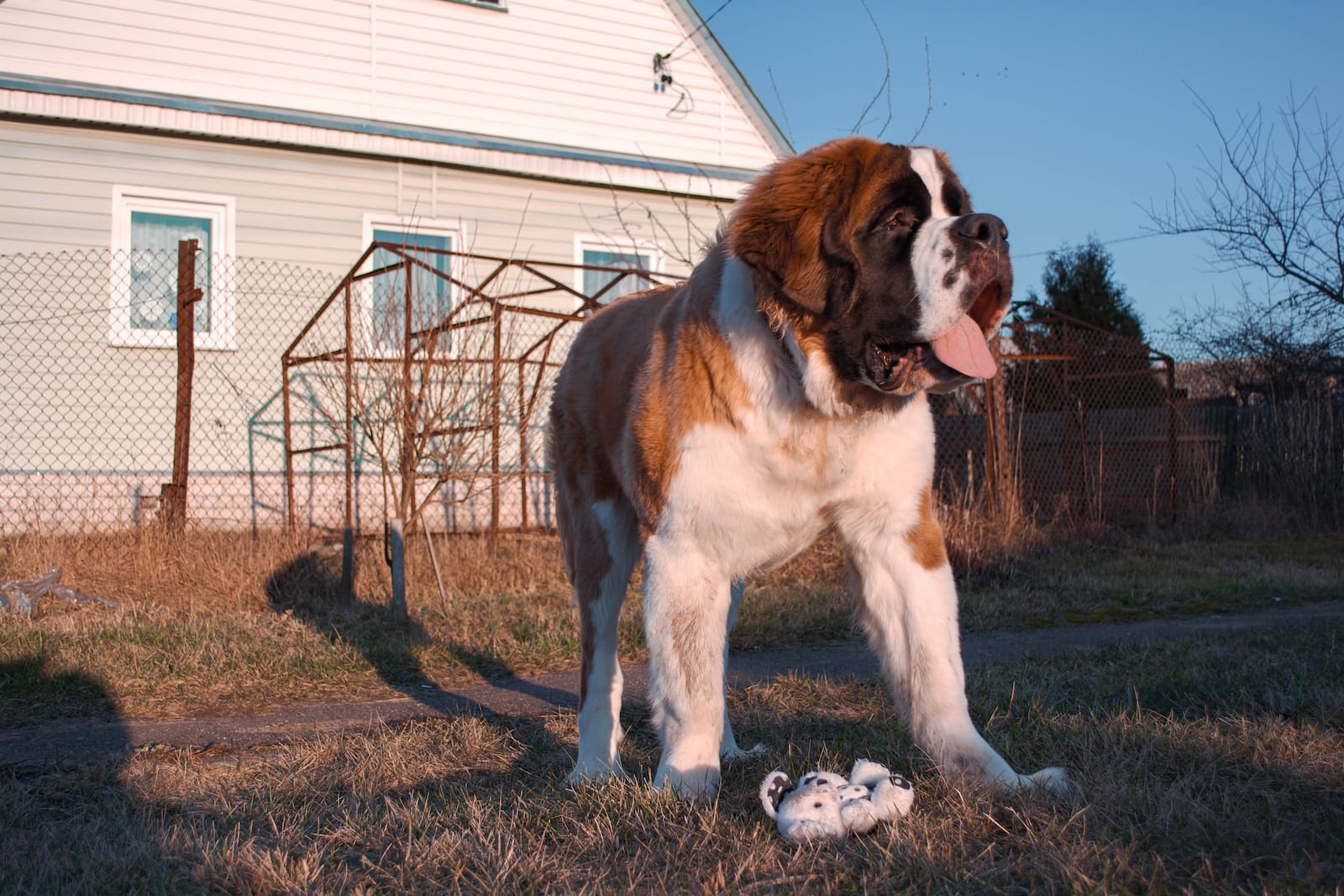
Food & Diet Requirements 🦴
Food will probably be your biggest annual expense with any dog, but even more so with a Saint Bernard. Giving your pet the right food formulated for their size and life stage is essential. Large breeds develop more slowly than small ones. You should give your pup a diet meant for giant breeds to ensure the proper nutritional support for growth and development.
You can feed your Saint Bernard puppy three to four times daily, as per the manufacturer’s feeding instructions. You can cut back to two meals once your dog reaches adulthood. Ensure your dog has plenty of fresh water to keep them properly hydrated, particularly if you give your pet dry kibble.
Exercise 🐕
The Saint Bernard is a moderately active dog. You must walk your pet daily to ensure they get enough exercise—about half an hour will do. Time outside will provide plenty of socialization opportunities. It will also introduce your pet to new experiences and people to offer mental stimulation. We suggest checking if your vet clinic or local doggie daycares offer puppy playtime so your pet can meet other dogs.
You should also verify any size limits that dog parks may impose before bringing your pooch to these places to meet new friends.
Training 🦮
You should start training your Saint Bernard right after acclimating them to their new home. We mentioned the breed’s sensitivity. That means using positive reinforcement over harsh words or punishment. This pup is often relatively easy to train if given the right motivation (treats, of course!). We recommend reserving them as training aids, given the breed’s propensity for weight gain.
The Saint Bernard dog is highly intelligent because their work historically demanded it. However, there’s also the independence that accompanies these tasks. A calm and confident individual can readily build the trust that is necessary for training dogs of this size and temperament.
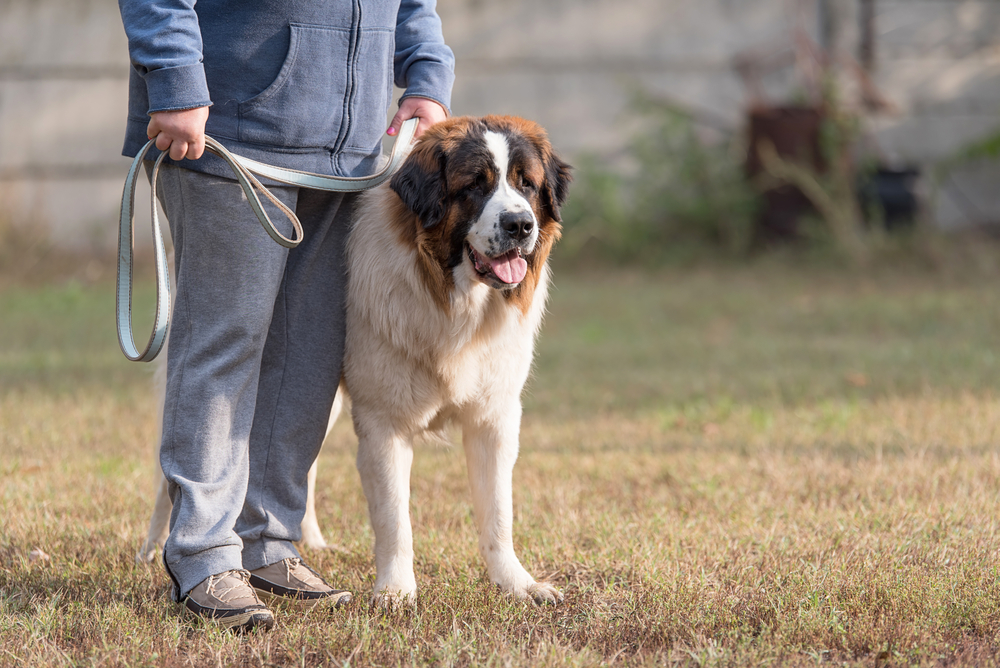
Grooming ✂️
The Saint Bernard sheds twice yearly. Weekly brushing can keep the hair in check and off your furniture. It’s also an excellent time to get your pet accustomed to being handled. You should also check their nails and ears during these sessions. We suggest handling your dog frequently and touching their paws. It’ll make grooming much easier for you.
Health and Conditions ❤️
This breed is susceptible to health issues common among large dogs, including joint disorders and bloat. Testing can detect many of them in pre-breeding health screenings, and we recommend only buying from a seller who does these tests and makes the results available.
We also suggest sticking with a breeder who offers a health guarantee. Reputable individuals will honor their commitment to providing the care to ensure healthy puppies. If possible, ask to see the mother and other littermates, as it can provide valuable clues about the animal’s well-being and temperament.
- Eye issues
- Hip dysplasia
- Elbow dysplasia
- Diabetes
- Degenerative myelopathy
- Bloat

Male vs. Female
The biggest difference between males and females is the size, where they can vary by as much as 60 pounds. Therefore, we suggest keeping that fact in mind when choosing a puppy. The temperament of both sexes is comparable, particularly with the proper training and socialization. While genetics play a role, environmental factors will also shape a dog’s personality.

3 Little-Known Facts About the Saint Bernard
1. A Lost Chapter Exists in the Saint Bernard’s Past
You may have noticed the gap between the accounts of the breed and its formal recognition. According to the Saint Bernard Club of America, no written records existed for 700 years until artwork depicting the dog surfaced.
2. The Saint Bernard Went Without a Name for Hundreds of Years
People called them hospice dogs because of their association with the monks. Other common monikers included Swiss Alpine Dogs, Monastery Dogs, and Holy Dogs.
3. The Saint Bernard’s Iconic Barrel Came From a Painting
The Saint Bernard, with their spirit-filled barrel, is the classic image people have of these pups. The origin goes back to 1820. Victorian artist Sir Edwin Landseer depicted a hospice dog in his artwork, “Alpine Mastiffs Reanimating a Distressed Traveller [sic].” The likeness stuck, making it synonymous with the pooch.

Final Thoughts
The Saint Bernard has been a fixture in alpine life, bringing comfort and hope to lost mountain travelers. They embody courage and athleticism to brave the rugged terrain under extreme conditions to carry out their jobs. This pup has everything going for them, from their affectionate nature to their large size. You can’t help but fall in love with this gentle giant, and we hope that after reading more about them, you are able to determine if they’d be a good fit for your home.
Featured Image Credit: Rita_Kochmarjova, Shutterstock
